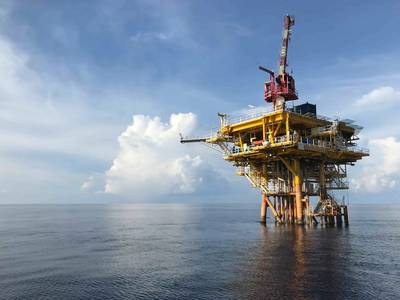Qatari Output at Gas Field Shared With Iran Is Steady
Qatar's gas production at the South Pars field is steady and supply is proceeding normally, it said on Tuesday, after the world's largest gas field was hit by an Israeli airstrike on Saturday, prompting Iran to partially suspend its production.
Qatar, the world's third-biggest liquefied natural gas exporter after the U.S. and Australia, shares the South Pars gas field with Iran.
"So far, gas supplies are proceeding normally. However, the ill-advised targeting raises concerns for everyone regarding gas supplies," Qatar foreign ministry spokesperson Majed Al-Ansari said.
"This is a reckless move ... The companies operating in the fields are international, and there is a global presence, especially in the North Field," he said during a weekly press briefing in Doha.
QatarEnergy has instructed tankers to remain outside the Strait of Hormuz and to enter the Gulf only the day before loading, two sources familiar with the matter told Reuters on Tuesday.
Concerns over LNG supply disruptions have boosted LNG prices at the Japan Korea Marker (JKM), widely seen as an Asian benchmark. It reached $13.948 per million British thermal units (mmBtu) on Tuesday, up $1.19 since Thursday June 12, before Israeli launched its attack on Iran on June 13, according to data from S&P Global Commodity Insights.
The EU benchmark gas price at the Dutch TTF hub rose 4.27% to 39.05 euros per megawatt hour (MWh) by 1600 GMT, up 2.67 euros since June 12.
The South Pars field is located offshore in Iran's southern Bushehr province and accounts for the bulk of production in Iran, the world's third-largest gas producer after the United States and Russia.
Loading of LNG from Qatar's Ras Laffan LNG Terminal, which usually loads about 90 cargoes a month, remains within the usual range so far, according to shipping data from ICIS LNG Edge.
"There appear to be more than a dozen vessels in ballast (not carrying any cargo) waiting outside the port. These would ordinarily be expected to load quickly, but it remains to be seen if these will be delayed," said ICIS' LNG analyst Robert Songer.
LNG tanker, HLAITAN, which delivered a cargo to India earlier this month, was on its way back to Ras Laffan but is idling away from the Strait of Hormuz, according to LSEG data.
"The current pattern — more idling vessels during summer — is typical, and the only tangible impact appears to be a few diversions and minor delays in loading," said Go Katayama, LNG and gas analyst at data analytics firm Kpler.
Critical energy infrastructure in Israel and Iran has not escaped unscathed from the first few days of the countries' conflict.
U.S. President Donald Trump said he wanted a "real end" to the nuclear dispute with Iran, and indicated he may send senior American officials to meet with Islamic Republic officials as the Israel-Iran air war raged for a fifth straight day on Thursday.
(Reuters)
